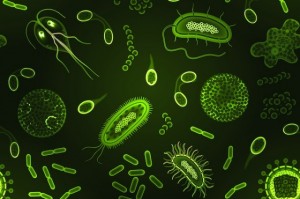Thanks to rapid and relatively inexpensive techniques, anything that can be swabbed, scooped and sequenced is fair game for bacterial community analyses. And, microbiome-mania aside, we are still discovering incredible things about the invisible microbial world everyday. Fellow microBEnet author David Coil has suggested that it is timely to collate the wealth of information that …
Captain William A. Pratt, U.S. Army Corps of Engineers, invites interested MoBE community members to discuss collaborative opportunities for three troop construction projects to be initiated in the next 6 months: * Bunkhouse construction project: opportunities to discuss building design options, indoor microbial monitoring * Lighting project for an existing structure: UV light testing, …
Attendee Registration Attendee registration opens March 1st. Please join us at the Microbiology of the Built Environment (2017) Symposium. Registration is open to MoBE researchers, stakeholders and community members. Invited keynotes, speakers, plenary session chairs, panel discussion moderators and panelists are pre-registered by the MoBE 2017 organizing committee. Registration will be open from March 1st through …
You know sometimes you use a working title for something for long enough that it becomes the title? Like “Snakes on a Plane”. That’s what happened in this case, we also meant to come up with a name for this class… never did and so the official name at the registrar is “Koala Poop”. Awesome. …
This is the 1500th blog post at microBEnet! I figured I’d take this chance to reflect a bit and look up some stats for anyone who might be interested. First the easy stuff: Since opening shop in April 2011, we’ve had 831,000 pageviews, by some 473,000 users. Around 75% of our site traffic is new …
In light of the Cold Fire that started yesterday evening in the central valley of California, I started to wonder, ‘what happens to microbes?!’ I found myself in a literature click hole of fantastic papers that studied how fire impacted soil microbial communities in several different ecosystems. What surprised me most is how fast researchers …
“Don’t tell me what you found.” “Oh my gosh it must be disgusting!” “Can people transfer vaginal microbes to each other?” These are some of the questions we’ve gotten from subway riders and press. Despite these reactions, our study on the Boston subway system is now out on MSystems! Recently, there has been a rise …
Floor dust is an important source of human exposure to microbes due to dust resuspension, especially from carpeted floors. Sources of microbes in floor dust are known to include outdoor air, tracked-in soil, growth on materials, and shedding from occupants or pets, but we wanted to know if growth may also contribute to these microbial …
Over the last several years our lab has spent a fair bit of effort on collecting and sequencing genomes of bacteria from the built environment. Genome sequences are useful for a number of reasons including facilitating metagenomics and understanding the actual metabolic capacity of particular microbes. In particular we hope that genome sequences will facilitate …
So our first attempt at entering the world of bacterial taxonomy and the description of a new species came out today with the thrilling title of “Porphyrobacter mercurialis sp. nov., isolated from a stadium seat and emended description of the genus Porphyrobacter“. The story leading to this paper took us into a lot of new …


